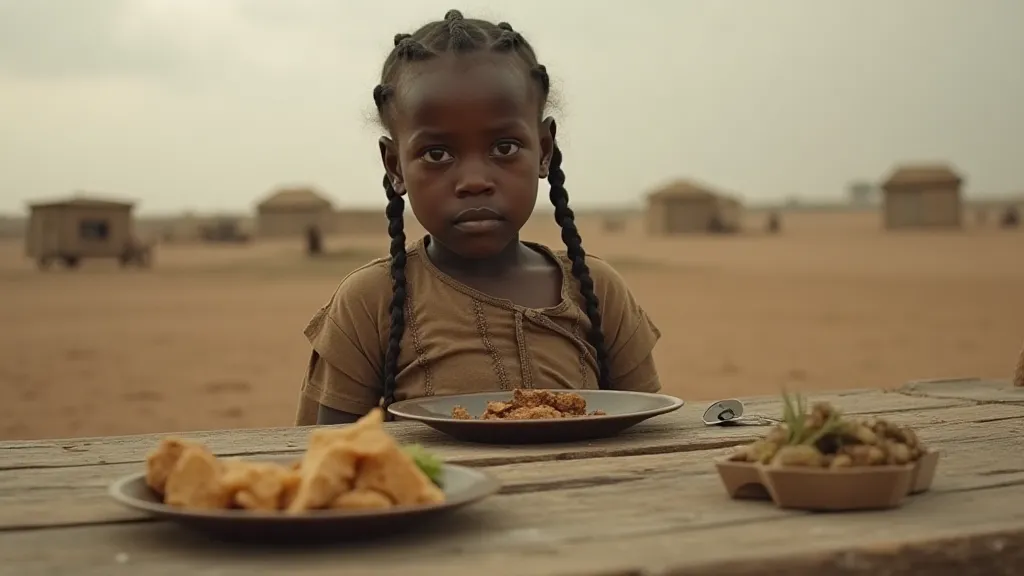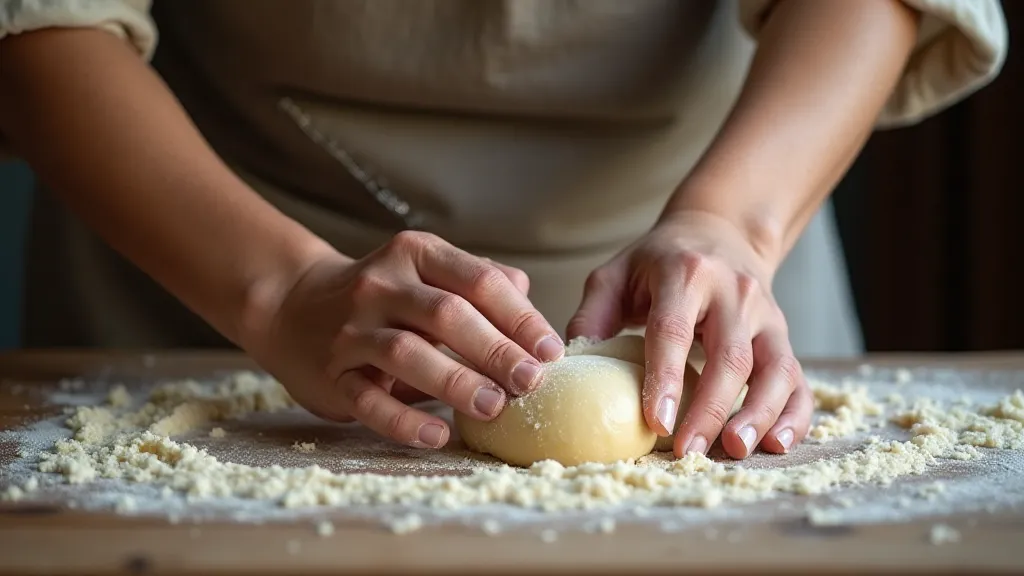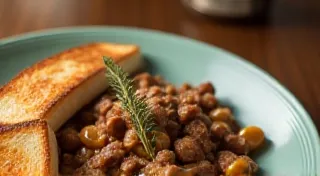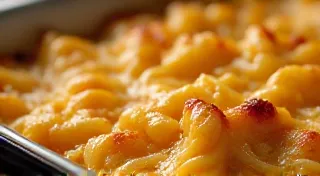The Dust Bowl's Table: A Still Life in Scarcity
The rhythmic wheeze of an antique accordion, its bellows straining against decades of dust and disuse, is a fitting soundtrack to the story of Depression-era cooking. It's a sound of resilience, of adaptation, of finding music in the face of unrelenting hardship. Beyond the gingham aprons and faded handwritten notes, the food of the 1930s wasn’t merely sustenance; it was a testament to the human spirit’s capacity to endure. It was intrinsically linked to the environmental and social cataclysm of the Dust Bowl, a slow-motion agricultural apocalypse that shaped not just the landscape, but the very essence of meals prepared. The story of Depression cooking isn’t just about recipes; it's a window into a defining moment in American history, a time when ingenuity and resourcefulness were not luxuries, but necessities.
Imagine the relentless prairie winds, not just carrying topsoil, but carrying away hope. Farmers watched their fields transform into barren, undulating deserts, their livelihoods vanishing with every gust. The government's response, while ultimately crucial, often arrived too late, or was inadequate for immediate relief. Families relied on each other, on community support, and on a level of resourcefulness that feels almost unimaginable today. The recipes born of this era weren't chosen for their deliciousness (though ingenuity often resulted in surprisingly flavorful dishes); they were dictated by what could be salvaged, what could be stretched, and what could be made to last. The sheer challenge of survival fostered a unique culinary landscape, one profoundly shaped by limitations and driven by a deep-seated need to nourish families and communities.

The Landscape of Scarcity: Beyond the Potato
We often associate Depression-era cooking with potatoes. And they were certainly a staple, incredibly versatile and relatively easy to grow even in challenging conditions. But the reality was far more nuanced. Corn, beans, and cabbage were also common – anything that could be stored for long periods. Meat was a luxury, reserved for special occasions or supplemented by whatever could be hunted or trapped: squirrels, rabbits, even prairie dogs in some desperate circumstances. Waste was anathema. "Nose-to-tail" eating wasn't a trendy philosophy; it was a necessity. Every part of an animal – bones for broth, organs often used in creative and surprisingly delicious ways – was utilized. Preserving what you had became an art form, and families learned techniques like canning, pickling, and drying to extend the lifespan of precious ingredients. The knowledge passed down through generations became invaluable, allowing families to stretch limited resources and ensure their survival.
My grandmother, Elsie, rarely spoke about those years. When she did, her voice would soften, and her eyes would take on a distant look. She told me once about making "Poor Man's Stew," a concoction that combined whatever vegetables were available – carrots, turnips, onions – with a small piece of beef, often a less desirable cut like shank. The broth, she insisted, was the key, seasoned with carefully hoarded salt and pepper. "It wasn’t fancy," she’s said, her voice trembling slightly, "but it kept us going. And it was made with love." That love, that act of creation amidst despair, is perhaps the most crucial ingredient in any Depression-era recipe. It was a time when even the simplest treat, like a batch of oatmeal cookies, felt like a victory. These weren’t mere desserts; they were symbols of hope and resilience, moments of joy carved out of a time of immense hardship.
Craftsmanship and Resourcefulness: The Art of Stretching
The resourcefulness wasn’t limited to the kitchen. Everyday objects were treasured and repaired rather than discarded. Old flour sacks were repurposed into dresses and aprons. Coffee grounds were saved to fertilize gardens. Nothing was truly “thrown away.” This same ethos extended to the cooking itself. Bread was made from scratch, and stale bread wasn’t tossed; it was soaked in milk and sugar to create bread pudding or French toast. Leftover vegetables were pureed into soups or incorporated into pies. Even fruit peels, often discarded today, were candied or used to flavor vinegar. The ability to transform the seemingly undesirable into something delicious – a skill much like the art of the alchemy of leftovers – was vital for survival. This understanding of ingredient transformation is something we’re rediscovering today with the rise of zero-waste cooking and a renewed appreciation for reducing food waste.
Consider the simple act of making gravy. Modern recipes often call for store-bought stock, but in the 1930s, gravy was born from the drippings of whatever little meat was cooked, supplemented by water and thickened with flour or cornstarch. It was a testament to the ability to create something rich and satisfying from almost nothing. The development of techniques to make the most of every resource extended to other staples as well. For instance, many families used clever methods to create filling and satisfying meals from otherwise sparse ingredients, resulting in dishes like sloppy joes, which became a surprisingly common and beloved staple.

Recipes of Resilience: More Than Just Instructions
Let’s look at a few examples. "Hoover Stew," named after President Herbert Hoover (though arguably unfairly), was a simple combination of ground beef, potatoes, onions, carrots, and canned tomatoes. “Creamed Chipped Beef on Toast,” while often served as a special treat, utilized inexpensive, salted beef that was soaked to remove the excess salt. “Apple Stack Cake,” a labor of love, involved layering thin rounds of dried apples between cake, a process that required patience and a steady supply of apples. These aren’t simply lists of ingredients and instructions; they are echoes of a time when survival depended on ingenuity and community. Often, recipes evolved, adapting to whatever ingredients were available – a true reflection of the era’s resourceful spirit. Many cherished family recipes, passed down through generations, embodied this spirit of adaptation and improvisation, and some of those same methods are seeing a resurgence in popularity today, as people seek to connect with simpler, more sustainable ways of cooking. Consider, for instance, the simple brilliance behind creamed chipped beef, a dish born from the necessity of making the most of limited resources.
Restoring an antique accordion, like recreating these historical meals, requires a deep appreciation for the original craftsmanship and the context in which it was created. It's about understanding the limitations of the materials and the skills available at the time, and replicating them with respect and accuracy. There's a certain poetry to it, a connection to the past that transcends the purely technical aspects of the task. Similarly, understanding the emotional weight of a "Poor Man's Stew" isn’t just about recreating the recipe; it’s about acknowledging the hardship and resilience that shaped it. The resourcefulness extended beyond the kitchen; entire families were involved in preserving food and stretching every morsel. This spirit of shared responsibility and collaborative effort was essential for survival during those challenging years.
Beyond Survival: Lessons for Today
The Depression and the Dust Bowl were periods of immense suffering, but they also fostered a spirit of resourcefulness and community that feels particularly relevant today. The focus on minimizing waste, maximizing resources, and valuing craftsmanship resonates deeply with modern movements towards sustainability and mindful living. The skills and lessons gleaned from those years – the ability to adapt, to innovate, and to find joy in simplicity – are valuable assets in any era. It’s a reminder that necessity truly is the mother of invention, and that simple ingredients, combined with ingenuity, can create surprisingly nourishing and satisfying meals. These lessons, and the deep respect for food and its origins, are incredibly valuable today as we navigate concerns about food security and environmental sustainability.

Perhaps the most enduring lesson from the Dust Bowl's table isn’t about the specific recipes themselves, but about the human capacity to endure, to create, and to find hope in the face of adversity. It’s a reminder that even in the darkest of times, the simple act of sharing a meal, of nourishing ourselves and others, can be an act of profound resilience. The strength and ingenuity demonstrated by those who lived through this era offer a powerful lesson in adaptability and resourcefulness, a reminder that even with limited means, joy and sustenance can be found. And those lessons, as timeless as the antique accordion that provides the soundtrack to their stories, continue to resonate today. The lessons of that era offer a profound reminder of the strength of the human spirit, and the power of simple, shared meals to connect us to one another and to our past. The resourcefulness and the ability to create sustenance from scarcity offers a powerful reminder that even in the face of adversity, hope and resilience can prevail.





